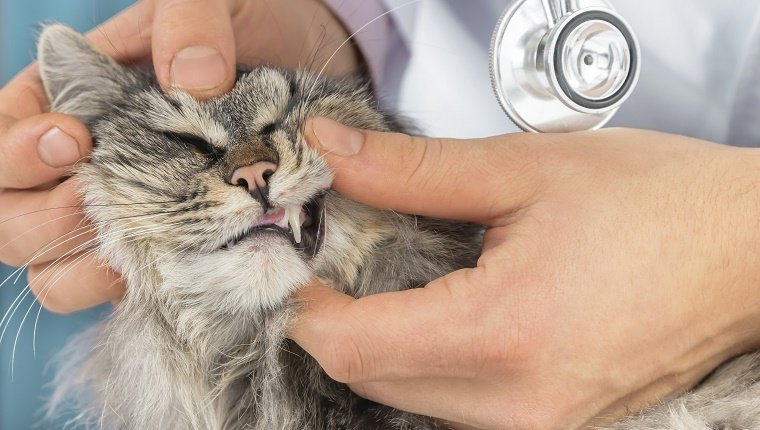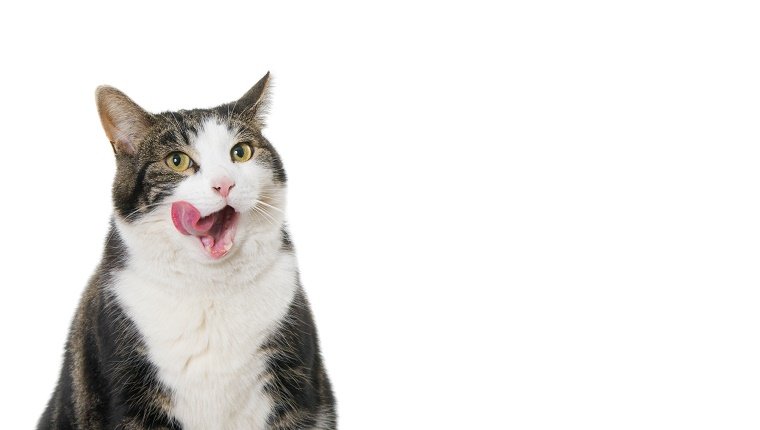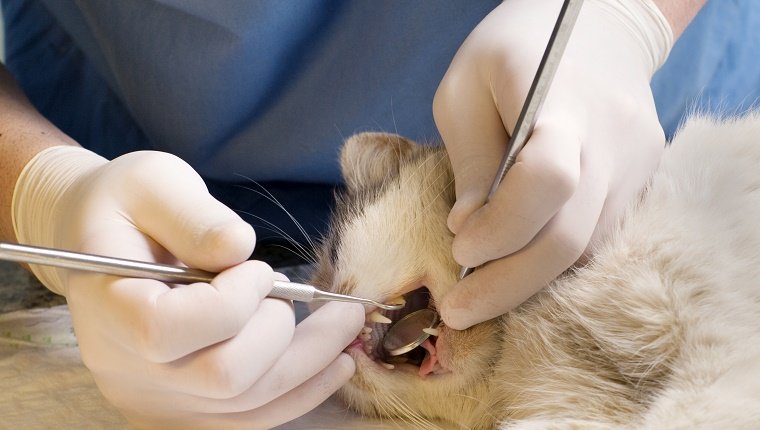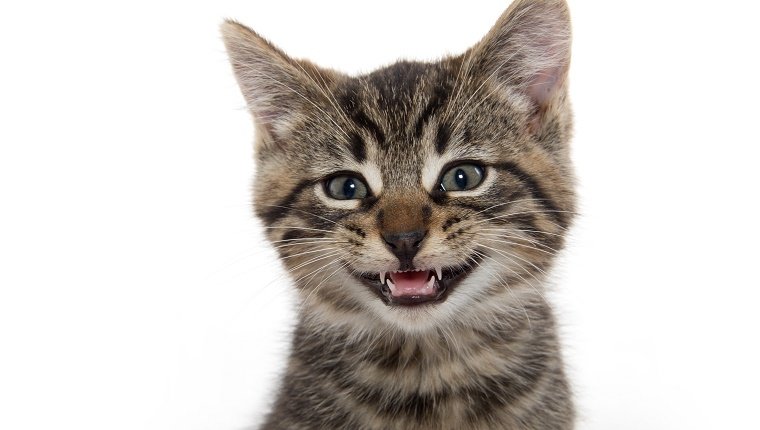February is National Pet Dental Health Month — a time for us give extra focus to cleaning and caring for our cats’ teeth.
Many cat parents who are otherwise strict about healthcare for their beloved kitties take a more casual approach to their dental care. So it’s not really surprising that 70 percent of adult felines have some form of periodontal disease by the age of three, or that dental disease is one of the largest causes of health problems in cats.
Take this month to learn more about your cat’s oral health, and spread the word to help other cat parents care for their kitties. Here’s what you need to know during National Pet Dental Health Month.
Periodontal Disease Causes Even More Nasty Problems

Periodontal disease results from a plaque buildup that calcifies to form tartar. This frequently pushes food debris and bacteria under the gum line, and that’s when the trouble starts. It infects the supporting structure for the teeth and causes inflamed, bleeding or swelling gums.
Bad breath is a symptom. Treatment for this disease includes antibiotics and dental cleaning, and cats may require tooth extraction in advanced cases.
Lymphocytic Plasmacytic Stomatitis (LSP) or Feline Stomatitis is a serious condition. Thought to be an autoimmune ailment where the body becomes allergic to a substance — in this case, the plaque around the teeth — it often appears in cats with other autoimmune diseases like FIV and FeLV, and is frequently accompanied by gingivitis.
Stomatitis can cause inflammation of the mouth that may extend into the throat and pharynx, causing red lesions that have a “cobblestone” appearance and texture.
Cats with this disease suffer a great amount of pain. You may see the cat pawing at their mouth, and it will eventually affect their ability to eat.

Feline Odontoclastic Oral Resorption Lesions, or FORL, are painful lesions that begin as shallow pits in the enamel and dentine of the cat’s tooth, and as plaque accumulates, the surrounding tissues become inflamed.
FORL is diagnosed with an oral exam by your veterinarian and most times requires an oral radiograph. If left untreated, the “pit” may extend into the tooth pulp and kill the affected tooth. The treatment of choice is most often a tooth extraction.
Proactive Prevention Saves Cat Teeth

Although evidence of pain when eating is often a symptom of feline dental disease, it is usually one of the last symptoms. To save your kitty’s teeth and be sure they won’t experience any pain or suffering, be proactive.
Don’t wait until the symptoms are obvious. With daily brushing and regular home exams paired with a well-balanced, healthy diet, your cat can enjoy their senior years with teeth intact.
Prevention is best, and that means examining your cat’s mouth and teeth. It’s always easier if you begin this process when your kitty is at a young age. If you’re gentle and move slowly, your cat will be more willing to tolerate the exam.
Just as brushing teeth is important for our own dental health, regularly brushing your cat’s teeth will be of great benefit to their oral and overall health. Feline mouth bacteria can cause other health issues as the bacteria enters and moves through the bloodstream.
Those bacteria will eventually reach and affect organs including the heart, liver, and kidneys where they can cause damage that may lead to other diseases and certainly will affect your cat’s health and longevity.
Brush Those Teeth!

Brushing your cat’s teeth isn’t as daunting as you might imagine. First, assemble your supplies and plan on spending about five minutes every day on oral care.
You’ll need a cat toothbrush or sterile gauze to wrap around your finger and cat toothpaste or a weak sterile solution recommended by your vet.
You can also try this brush and toothpaste available on Amazon.
Wrap a strip of gauze around your index finger or take the cat toothbrush and dip it in the sterile solution or apply a small amount of cat toothpaste.
Never use toothpaste for humans. Those are meant to be rinsed out and not swallowed. Toothpaste formulated for felines contains enzymes that do a superior cleaning job and aren’t harmful for kitty to swallow.
You might even try a flavored toothpaste for cats. There are fish-flavored ones that most cats find tasty!

Hold kitty on your lap, open their mouth, then gently rub your finger or brush in a circular motion on the teeth, especially next to the gums. You don’t have to worry about the back of the teeth that gets cleaned by saliva, but gently massage the gums.
It may be easiest to start with gauze, then graduate to a small toothbrush when your cat becomes more comfortable.
When you finish, give praise and pets, along with a special treat as a reward. Knowing a treat is coming often trains cats to tolerate the cleaning more calmly.
With some patience and care, you’ll have everything you need for your pal’s ongoing dental health regimen. Open wide, kitty!
Do you do regular teeth cleanings for your cat? Are you learning more about oral care during National Pet Dental Health Month? Then let us know in the comments below!
Related Articles:




